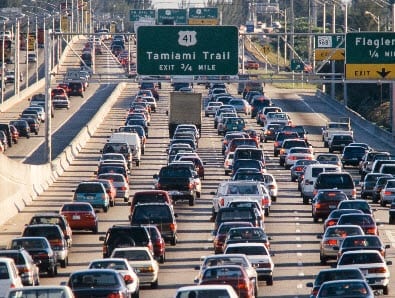If you’ve ever moved to a new state, chances are that you’ve experienced a significant rate change in your car insurance. But what’s with car insurance being so much more or less expensive from one state to another? Here’s a quick guide to explain why these rates can change so drastically.
Multiple Variables Affect Your Rates
With car insurance, there’s really no single answer as to why these rates vary; in truth, there are innumerable insurance rate details that can confound all but the most seasoned underwriter. But the short version, why anyone considering moving should have at least a basic grasp of, is as follows:
- State laws vary from state to state, and insurance prices vary with them.
- Traffic density is different from location to location, and insurance prices vary with it.
- Crime rates vary from area to area, and insurance prices change along with them.
- Court costs are not the same from county to county, and insurance prices adjust accordingly.
- Natural disaster risks are different from place to place, and insurance rates use these as part of the equation.
- General cost of living varies from region to region, and insurance prices take those into consideration as well.
Now that you know the big factors that change car insurance from state to state, let’s talk about why. The obvious answer is money, but of course it’s never quite that simple. So:
Traffic Density
You know how it’s always easier on Black Friday to go find some out-of-the-way store to shop in? That’s because fewer people means less jostling, bumping and congestion. The same logic applies on the road: the fewer people there are per square mile, the fewer accidents there are. The fewer accidents there are, the fewer insurance claims get filed, and thus the less the insurance company has to pay out — and therefore, the less they charge in premiums.
because fewer people means less jostling, bumping and congestion. The same logic applies on the road: the fewer people there are per square mile, the fewer accidents there are. The fewer accidents there are, the fewer insurance claims get filed, and thus the less the insurance company has to pay out — and therefore, the less they charge in premiums.
State Laws
The most basic thing affecting car insurance is your coverage — and the one thing that affects your coverage more than anything else — is the state laws mandating coverage minimums. If your state requires you to carry $25,000 to cover damage to another driver’s property, and the next state over requires you to carry $45,000 for that same purpose, you’ll find that naturally, the minimum insurance costs in the neighboring state are going to be significantly higher.
Crime Rates and Natural Disasters
In some areas, your car is more likely to be vandalized, stolen, crashed into by someone trying to get away from a crime, washed away in a flood, blown away in a windstorm, or torched by a wildfire. In these areas, more claims will be filed, meaning higher premiums.
Cost of Living
Then there are the places where living just plain costs more than in other places. Costs for food are higher, costs for rent are higher, and in response to these, wages are higher. As part of the economic cycle, costs for large-scale goods like cars go up, which means that insurance companies pay out more in these areas for the exact same car accident that happens in a lower-cost-of-living area. That, in turn, makes them charge considerably more in premiums.
So after reading this guide, you should have a better idea of why car insurance rates can be so different across the country. If you’re planning a move to another state, you might want to carefully consider what effect this can have on your own policy. What experiences have you had with car insurance when moving from state to state?
For more information on your state insurance guide, limits and laws.
